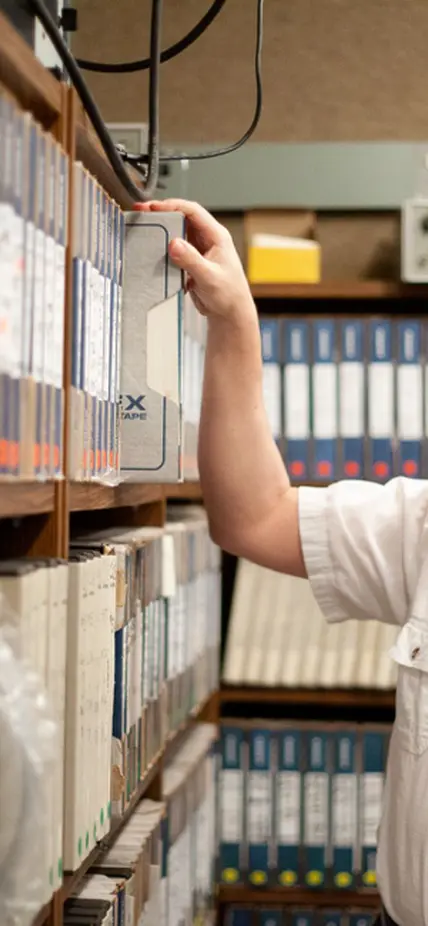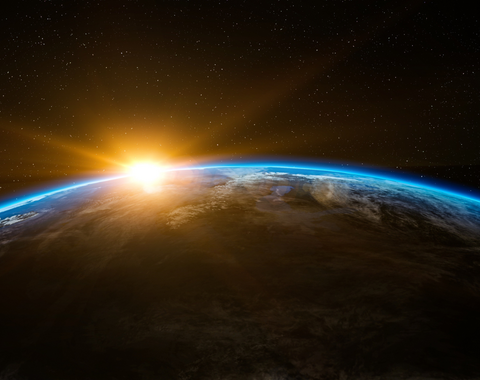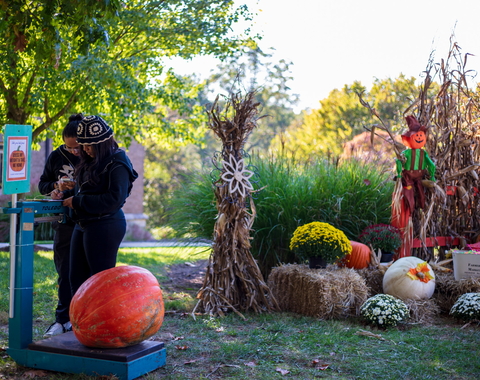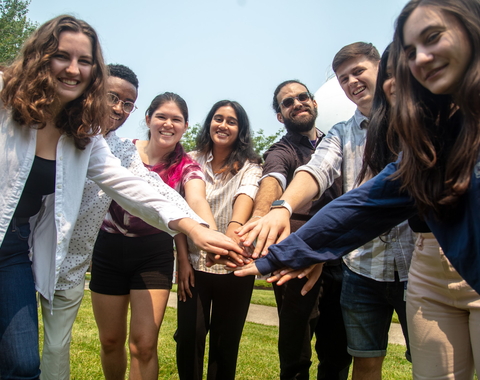Steven Golden is an Observational Geophysical Technician at the Carnegie Science Earth and Planets Laboratory. He works with the staff geophysicists Lara Wagner, Diana Roman, and Helene Le Mevel to process and archive seismic, volcanological, and other geophysical data.
In order to do this, he maintains geophysical field equipment and develops new software and hardware for field deployments. He also helps organize and manage both historical legacy data and new data, which requires the ability to both understand old archival systems and help innovate new ones.
(This interview has been edited for clarity.)
How would you describe the work you do here at EPL?
It’s hard to put everything I do into words!
My job spans a variety of activities. A lot of it is office work focused around organizing and processing field data and metadata to make it easier to work with for our and other scientists and to ultimately get it archived in public repositories. This also involves quite a bit of software coding, be it for one-off scripts or for longer-use conversion software and such.
There is also lab work—I get to fix up busted instruments returning from the field, work with our electronics and machine shops on making some of our own custom gear, and spend a lot of time just testing equipment before it goes back out into the field.
Finally, once in a while, there is fieldwork itself—in some years a lot of it, in others none at all. On some projects, I may accompany our scientists to the field, on others I may only provide remote support by preparing and shipping the necessary gear, which can actually get logistically quite complicated, and by providing sort of a troubleshooting hotline. The projects where I get to go to the field myself are of course the most exciting, but most of that other work is quite interesting as well.
How long have you worked at Carnegie?
I started in March 2006 after a "working interview," which involved helping out for a week
in the field to get the first set of High Lava Plains (HLP) stations installed in Eastern Oregon.
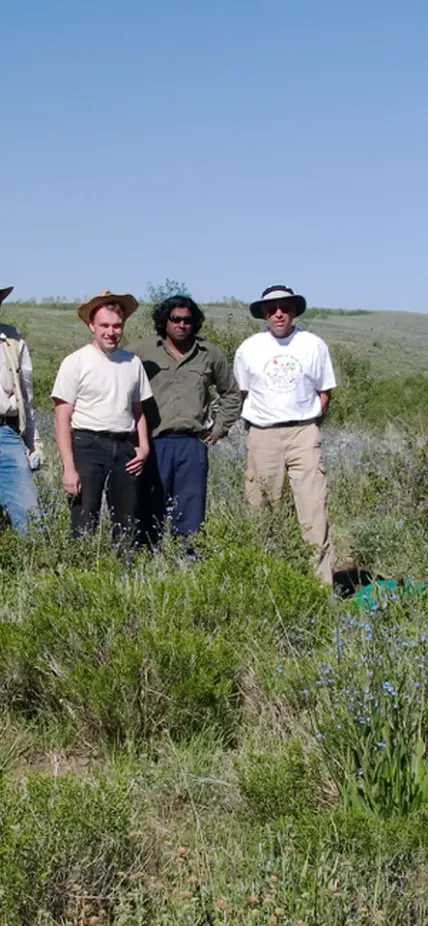
David James, Steven Golden, Shaji Nair, and John West (l to r) pose next to an installed seismometer station in Oregon for the High Lava Plains project in 2006. The goal of the project was to determine the crustal and upper mantle structure beneath the High Lava Plains (HLP) of eastern Oregon and compare it with the geologic record in the area in order to understand the driving forces for the extensive magmatism and tectonic activity.
Do you have a favorite or most memorable project that you've worked on?
David James, Steven Golden, Shaji Nair, and John West (l to r) pose next to an installed seismometer station in Oregon for the High Lava Plains project in 2006. The goal of the project was to determine the crustal and upper mantle structure beneath the High Lava Plains (HLP) of eastern Oregon and compare it with the geologic record in the area in order to understand the driving forces for the extensive magmatism and tectonic activity.
During the first years after I started working here, we had a lot of field projects going on, sometimes in parallel. In recent years things have quieted down a little, but this is about to change with upcoming projects in the pipeline. Anyhow, during those early years, the High Lava Plains (HLP) project was certainly the largest seismic deployment I had ever been involved with, and it came with some unforgettable experiences.
Not all of those experiences were fun at the time, but those are the ones we call in retrospect "having an adventure". Like driving for hours on primitive dirt roads through Eastern Oregon's seemingly endless sagebrush sea to get to an isolate seismic station, troubleshooting some technical issue on-site in the hope that you can find a fix with the materials on hand or otherwise having to do the trip again—oh and hoping that you won't have a second flat in a row on your way back, as it will take a long time to get help out, even if contacted via sat phone.
What does a day in the life of Steven Golden look like?
This one's tough... is there a 'typical’ day? Digging through archival tapes, integrating new seismometers, traveling to distant locales... it’s a new project every day! (At least that’s what I like to tell myself while once again spending days in a row in front of my laptop screen just trying to get some seemingly trivial code of mine debugged.)
What is the most challenging thing about your job?
That my job sometimes requires finding solutions to problems that I don't have a clue about. There is certainly always a lot to learn. But this might at the same time also be the coolest thing about my job.
If I really had to nitpick one thing I dislike the most, it probably would have to be dealing with customs paperwork for international shipments, but that's the price for getting to do field projects at exotic locations.
What projects are you working on now?
Quick Deploy Box
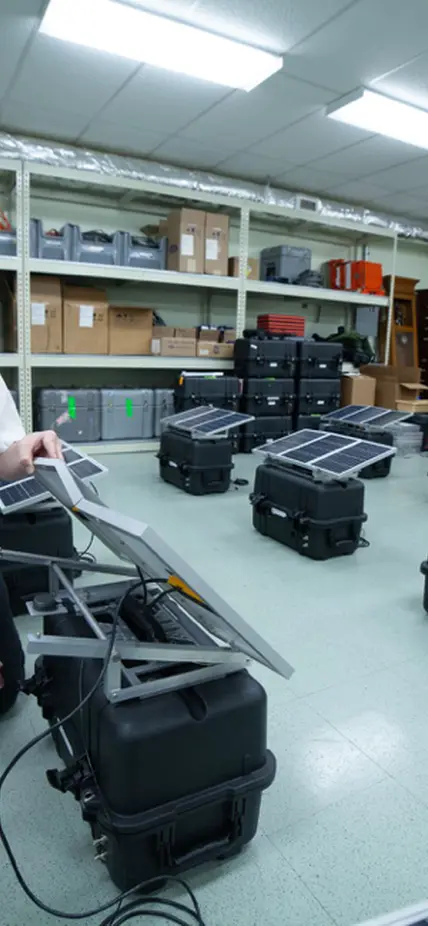
Steven Golden works to assemble the 25 new Quick Deploy Boxes, which will be used by Lara Wagner in her upcoming MUSICA project.
Currently, I am spending much of my time finalizing the next upgrade step to our seismic instrument pool, which will provide us with 25 new Quick Deploy Boxes (QDBs).
The QDBs are modified Pelican cases that contain nearly everything needed to set up a seismic station—just add a battery! They are much faster to set up than the traditional seismic stations. These boxes utilize new seismometers and seismic recorders that we are still gaining experience with. We just finished running a little test backyard seismic network that we installed a year ago while we were working from home.
If everything works out, Lara Wagner plans to deploy the new QDBs next year in Colombia as part of her delayed MUSICA project. I have already signed up to help with the fieldwork should this project finally come to pass.
Seismic Data Archive
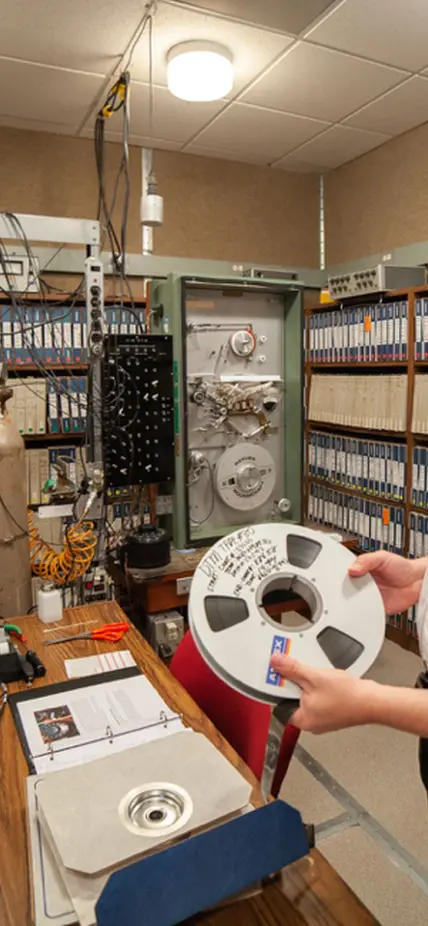
Steven Golden digitizes and archives the analog magnetic tape data from a network of seismic broadband stations that were operated by Carnegie under Selwyn Sacks between 1965 and 2004.
Perhaps less exciting but equally important is ongoing archival work on a multitude of old data sets. Most notably among these is the digitization and archiving of analog magnetic tape data from a network of seismic broadband stations that were operated by Carnegie under Selwyn Sacks between 1965 and 2004. Reading those old tapes took quite a bit of research and tinkering with technology built before I was born, which was a unique experience.
At this point, much of the remaining digitization work should have turned into a routine background task—except that it never really turns into a routine after all! Every second tape or so seems to present some new challenge.
Thankfully, Adriana Kuehnel has recently joined this effort and is providing me with a lot of help to get through this backlog.
Steven Golden carefully feeds the tape through the machine reader. Digitization required custom hardware and software to be restored or newly developed. After initial digitization, each tape's time track is decoded and the waveform data integrated and resampled to correct for tape speed variations. The output is reviewed for data quality and coverage, and the results are compiled alongside scanned field notes into a meta-data catalog.
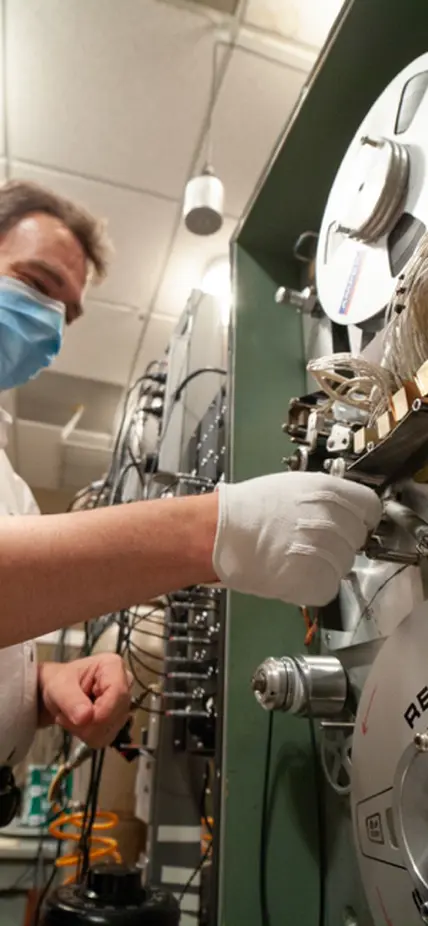
Steven Golden carefully feeds the tape through the machine reader. Digitization required custom hardware and software to be restored or newly developed. After initial digitization, each tape's time track is decoded and the waveform data integrated and resampled to correct for tape speed variations. The output is reviewed for data quality and coverage, and the results are compiled alongside scanned field notes into a meta-data catalog.
Data Quality Controls
I am also looking forward to trying out a new data quality control software suite developed by IRIS, using data from our backyard network as a test case. There is strong interest in getting
our seismic quality control workflow optimized to deliver faster and more consistently documented results for future experiments.
What is something someone might be surprised to learn about you?
Hmm, like a 'secret' that few of my colleagues know, or care, about, but that's not too embarrassing to reveal?
Perhaps that I spend a significant chunk of my free time playing video games? Although a lot less than I once used to. If I think back far enough, it was really games that started my career path, as it was my desire to make my own that got me interested in programming and mathematics. Only later did I realize that combining those skills with my more general interest in science could be fun, which eventually led me to start studying physics, and later, inspired by a temporary job at a Natural History Museum to specialize in geophysics.
How did you end up at Carnegie Science?
While studying Geophysics at the University of Frankfurt in Germany I gradually realized the hard way that although I loved doing field and instrumentation work, as well as work on analyzing the data, I was not very good at writing up my conclusions into publications.
I started looking for a niche position, preferably still within academia, that would allow me to focus on the former while mostly avoiding the latter, which was really limiting my options. But thankfully options still did exist, and this position at Carnegie stood out by the amount of freedom it offered to still conduct some "behind-the-scenes research" on the side. Thanks to my dual citizenship, it was relatively easy for me to move from Germany to the US to accept this offer. It was still a big personal decision, but one I never regretted.
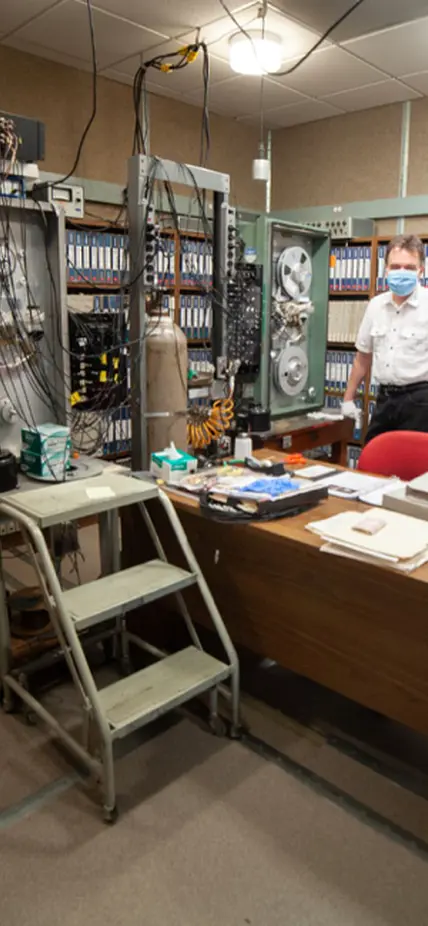
Steven Golden stands in the old-school tape storage archive which stores the historic collection of data from seismic broadband stations operated by Carnegie Science under Selwyn Sacks between 1965 and 2004.
Why do you think this type of work is important?
Steven Golden stands in the old-school tape storage archive which stores the historic collection of data from seismic broadband stations operated by Carnegie Science under Selwyn Sacks between 1965 and 2004.
It’s important to never stop learning—whether as an individual or as a society!
The kind of research we do at Carnegie is primarily basic research rather than applied science. That means we are trying to discover basic facts about how our world works. For example, we use temporary seismic networks to collect data to better understand the detailed workings of plate tectonics or volcanoes. Most of these networks are operated in an offline fashion due to the costs and power requirements of long-range telemetry. (Although, this may be changing in the not-so-distant future.)
This means that data typically becomes available only weeks or months after it has been recorded. I once had a person tell me that therefore this would be "useless", as our data cannot provide early warning for earthquakes or volcanic eruptions. However, without basic research like this, how are we supposed to fully understand the detailed mechanics behind earthquakes and volcanic eruptions? Understanding that is, among other things, essential for our colleagues who do focus on building and operating modern warning networks.
I, therefore, do believe that our work does have a very important positive impact on society, even if perhaps indirectly.
More specifically about my own job: Researchers, whether staff scientists or postdocs, are very busy people, and cannot be skilled in everything. I believe that having support staff to fall back on for troubleshooting technical and logistical issues, getting equipment to just work, getting their data into formats that their analysis software understands, and many other things, is something that gives Carnegie researchers a significant advantage over their colleagues at many other places.
